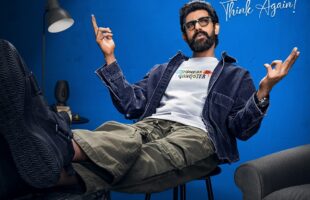While there is still much hype surrounding new media, most, in 2008, are no longer new. Newsgroup chat rooms, conceived in 1979, will celebrate their 30th anniversary next year. ‘Weblogs’, now commonly known as blogs, were created in 1997; ‘bloggers’ have been blogging for a decade. Yahoo and Google started in 1994 and 1998. These media are not ‘new’ at all, but so-labelled because they represent alternative ways to distribute information. While the media have previously evolved, for example the introduction of television, we are living through a period of quickening media and communications change. Traditional definitions of media such as ‘newspapers’, ‘television’ and ‘radio’ are no longer mutually exclusive. Newspapers can be read online, television programmes can be viewed on computer screens, while radio programmes can now be downloaded as podcasts. Their effectiveness should still measured by the impact of the content. When social science intellectuals and ‘new age’ journalists discuss with enthusiasm how new media will bring changes to the way we disseminate information, recent research from Media Monitors on the part played by new media in the Australian Federal Election in 2007 shows that the significance of ‘web 2.0’ was overstated. Despite wide belief that new media can contribute to better and more interactive dialogue between young voters, there were reports that many political sites cannot present an “uninterrupted, open and direct channel between decision makers and voters.” This is reflected by the relatively low number of articles which actively communicated that “new media enhance public debates” or “new media open public access to politicians.” Also, there were very few articles actually using terms such as ‘e-election’, ‘YouTube election’ and ‘Internet Election’, which suggests that new media are still only playing a secondary role in election campaigns. Instead, the potential of new media to damage or ridicule candidates in the election was actually noted by the traditional media. Key examples of this during the campaign were footage of candidate and PM-elect Kevin Rudd appearing to consume his own ear wax, and Tony Abbott discussing Work Choices. Widespread coverage of these videos helped to place YouTube as the leading new media type discussed in the coverage analyzed. This increasingly complex media matrix puzzles many ‘traditionalists’ who try to run their campaigns on new media to establish dialogue with young audiences. In fact, major parties in the election did not use new media to its full and proper advantage. They did not spend enough time updating their websites, they failed to observe the proper etiquette of the online world and so on. They also treated new media as an awkward add-on to traditional media that often confused the core messages between the two. Politicians themselves were simply unclear about the functions of new media in their campaign strategies. In analysis of the US elections at present, one measurement expert argued that online measures of engagement can be used to predict the voting process. The premise was that Obama had a significantly greater engagement on YouTube than Hilary Clinton. Likewise on Facebook, there were approximately 500,000-plus groups that supported Obama, compared to Clinton’s 100. Also Obama consistently maintained a 50 to 60 point lead over Clinton in Facebook’s US Politics application. This analysis suggests that the Democratic primary would be well and truly over if we only analysed the engagement of the two candidates on YouTube and Facebook. Yet, the primary continues. What the Media Monitors’ research and the voting outcome analysis highlights are considering and understanding the complexities of the media as a whole. Obama has significant support on YouTube and Facebook. Does that correlate with the audiences who are using this medium? So how are Clinton supporters communicating? What media are they using? Therefore, it is too narrow to just evaluate one specific subset of media, like blogs or print media. Instead, the audience should dictate your choice of media. In the context of politics, public figures still have much to learn before they can utilize new media well in their campaigns, as they operate on a protocol not yet mastered by most today. In the media world of the future, we believe that only two things will really matter: content and users – whether they are producers or consumers, or a combination of both. First of all, the materiality of media is becoming increasingly unimportant. With convergence, content pays no mind to the medium through which it is distributed – nor do most users. On the other hand, computer hardware such as computers and telecommunications networks are fading into the background and becoming invisible. Similarly, cables and wires are disappearing as people move to wireless. ‘Logging on’ is increasingly being replaced with ‘always on’ networking. But what is most significant is the growing psychological invisibility of hardware. Today media are intellectual property in the form of both applications and content. Audiences are the network. They are actively connecting, linking, redirecting, forwarding and injecting local comment and static into communications. They are the networks that broadcast information and transfer news. New media are undeniably playing an increasingly important role in election campaigns all over the world. While new media are being used, it may not necessarily be used well, as it operates against a different protocol. Whether a politician or a communications professional, more time and resources should be devoted to understanding the appropriate function and utility of new media, and learning to observe the code of conduct in the online world in order to get the most out of this platform. The potential is limitless. Asia Media Monitors is the SE Asia HQ of the Media Monitors group of companies, a leading media intelligence organization. www.asiamediamonitors.com TVAplus
Ad – Before Content
Related Articles
Prime Video Announces a Stellar Line-up of Exceptional Indian Stories for the Prestigious 55th International Film Festival of India (IFFI)
TVN chooses Leader and PHABRIX T&M for latest production unit
Ex-UKTV/Dave commissioners launch new comedy content creation label Square Pears
CANAL+ Polska expands playout capability with Cinegy Solutions
Global Agency Acquires International Rights to Love, Marriage, Divorce
Hello, Love, Again breaks into US Box-Office Top 10







